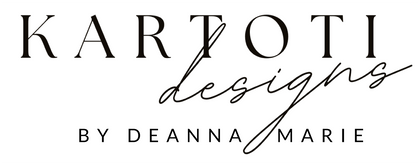So you want to license your artwork… but what does that really mean?
Licensing is one of those exciting terms you hear a lot in the surface pattern design world. And while it sounds great (hello, seeing your art on beautiful products!), the actual process can feel mysterious—especially at the beginning.
This post is meant to be an overview of how art licensing works: what the process typically looks like and what steps are involved in getting your work onto products.
And here’s something I want you to know right away:
Licensing is a slow burn.
It’s not about one big break—it’s about steady progress, building relationships, and staying visible. So let’s walk through what that journey can look like.
What is Art Licensing?
In simple terms, art licensing means you’re giving a company permission to use your artwork on their products for a set period of time under specific terms. You still own your work—but you’re allowing them to print and sell it.
Think:
-
A stationery brand printing your florals on notebooks
-
A wallpaper company using your repeat pattern in their seasonal collection
-
A holiday brand licensing your festive illustrations for next year’s product launch
An Overview of the Licensing Process
Step 1: Build a Body of Work
You don’t need 100 designs to get started—but you do need a collection (or a few strong standalone pieces) that represent your style and what you want to license.
Step 2: Organize Your Portfolio
A clean, easy-to-view portfolio is key. Whether it’s a PDF or a password-protected online gallery, it should help art directors see how your work could fit into their product lines.
Step 3: Research and Reach Out
Look for companies that align with your aesthetic. Reach out with a short, professional note and samples of your work. Even if you don’t hear back, you’ve planted a seed.
Step 4: Start the Conversation
If they’re interested, they’ll reach out to discuss what they need, how they want to use your art, and what that might look like on paper.
Step 5: Review the Contract
This is the business part—usage rights, exclusivity, royalties, timelines. Don’t be afraid to ask questions. A good licensing deal is mutually beneficial.
Step 6: Deliver the Files
Once the contract is signed, you’ll provide the final artwork files (often layered PSDs or AI files, depending on their needs).
Step 7: Repeat, Grow, and Keep Going
Licensing isn’t one-and-done. It’s a long game. One opportunity often leads to another—and the more consistent you are, the more memorable you become.
Keep Pitching, Keep Creating
Here’s the truth: most companies won’t say yes the first time.
But unless they explicitly say they don’t license artwork, assume it’s a “not right now,” not a forever no.
The key is to keep creating art, keep pitching, and keep showing up. The more you stay in front of their eyes—through newsletters, updated portfolios, or friendly follow-ups—the more likely they are to remember you when the right project does come up.
It’s about showing up with joy, patience, and persistence. Licensing is a relationship-building journey—and your next opportunity might be just one pitch away.
Licensing your artwork can feel like a big leap—but it’s also an exciting one. And you don’t have to figure it all out alone.
What part of the licensing process feels the most unclear or intimidating?
If you have questions or just want to talk through where you're at, I’d love to hear from you.
Feel free to reach out to me at my handy dandy contact page here —I’m always happy to connect and cheer you on.
— Deanna Marie

FREE ESSENTIAL TOOLS FOR SURFACE PATTERN DESIGNERS
My favorite tools for designing, sketching, creating patterns & more!


